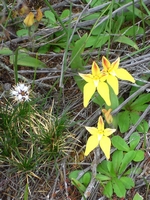Australia So Much to See


2007 We investigate the history of the Coolgardie Kalgoorlie Goldfields including the Holland Track, the John Holland Way, the historicWoodlines and the Golden Quest Discovery Trail. This section takes us along the southern section of the Holland Track from Broomehill to the Hyden-Norseman Road.
This was an opportunity to try out our F250 for camping on a two week holiday without taking the caravan. We were unsure about
taking the entire Holland Track with our newly acquired larger vehicle, due to reports of narrow ‘scratchy’ sections and woodlands
with a winding and narrow track. However we were not willing to let the thought of few scratches put us off completely. September is usually the earliest that travel can be undertaken on the Holland Track, as prior to that it can be too wet and boggy. We travelled late in September.
For continuity, places have been grouped in this travelogue, rather than a day by day diary.

Outback four wheel drive routes: Holland Track and Holland Way
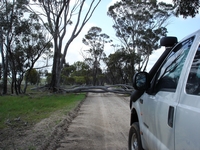
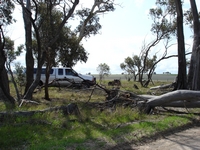
The southern part of the Holland Track commences at Broomehill and, using rural roads and tracks, roughly follows the route taken
by John Holland in 1893. He and three companions set out to cut a track suitable for horse drawn conveyances along a 500 kilometre
route between Broomehill and Coolgardie. This was to expedite the journey of gold seekers, many who came from the eastern states
by ship to
Graeme Newbury of Broomehill
was instrumental in retracing and reopening the track. Together with researcher Adrian Molloy, they commenced in 1984 retracing the
route from Broomehill to Mount Holland. In 1992, Graeme used his farm tractor to clear parts of the track north of Mount Holland. In May 1993, Graeme led a small group of travellers through the newly re-opened Holland Track. Now travellers with high clearance
four wheel drive vehicles can re-trace the steps of John Holland as his party along the northern section (north of the Hyden Norseman
Road), which is maintained by the Perth Four Wheel Drive Club. The southern section is in the majority on regular
roads and can be undertaken in any type of vehicle. Difficult sections can be avoided by alternative routes.
References
from the booklet “Explore the Holland Track and Cave Hill Woodlines” Westate Publishers Pty Ltd 2002, which we used as our guide.
We commenced our journey near the small Wheatbelt town of
We then followed the general direction of the former route along various rural roads through wheat farming land.



A little further along
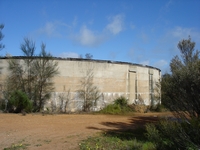

Water collected from rainfall on granite outcrops was a significant water source along the Holland Track. Granite rocks were also used to collect water to supply the towns during the gold rush.
We failed to find the track to a preserved section of wheel ruts from the original track, which is to the south of the
Needing to re-fuel, we took a short detour into Newdegate, and found a new public convenience block, complete with free hot showers,
next to the service station. Something to remember for our return trip home.
Back on the Holland Track route to the north of Newdegate we passed the former town site of
Signs of wheel ruts from the days of horse drawn wagon transport can be found on the other side of these rocks. Dragon rocks
contain many gnamma holes and are an important water source. In just one of the pools were very tiny frogs. The rocks
are named after the dragon lizards, which scurry across the granite to hide under flaking rocks, and are found throughout the region.
The rare species the Numbat is
Numbats, also known by the names Walpurti or Banded
Anteaters, live exclusively on termites, which they catch with a 100-mm long tongue. Individuals eat 20,000 termites a day and is
the only small mammal to forage during the day, when it can easily be seen on the forest ground or climbing trees after termites.
Good places to see Numbats are
Vegetation soon became sparse as we crossed a state vermin proof fence, until we met the

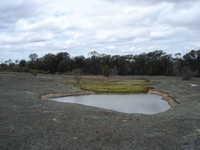
We were intrigued when we found termite mounds that had been broken into. The mound had been scratched to access termites,
and I believe this to be the work of Numbats.
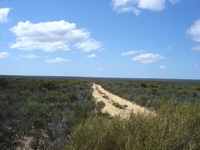
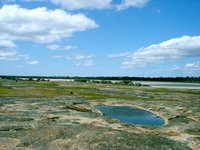
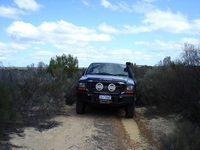

The
